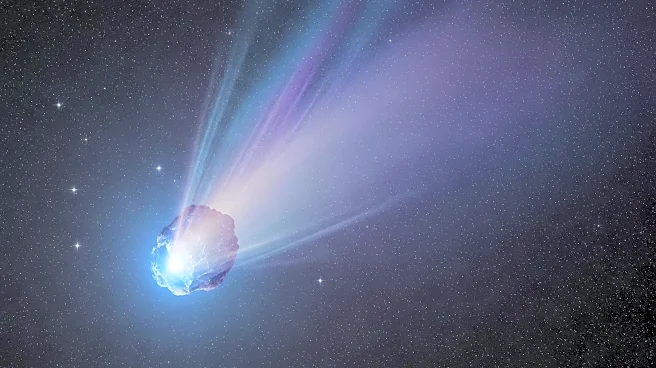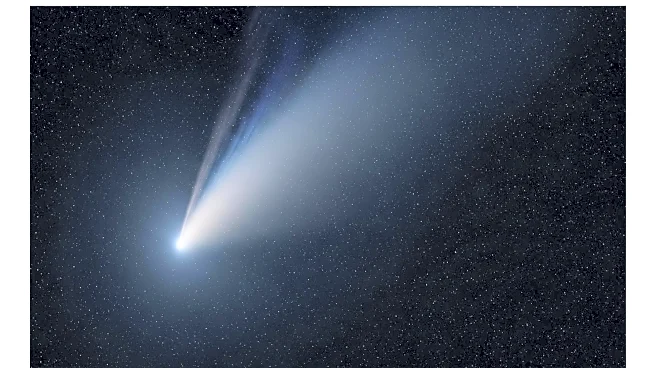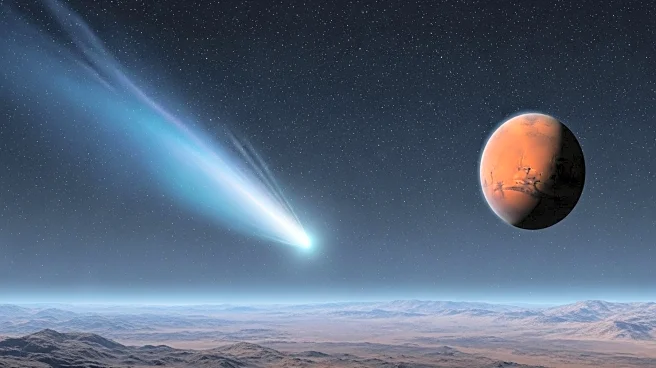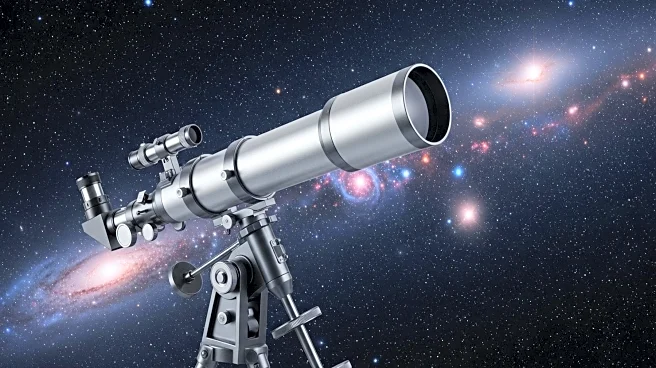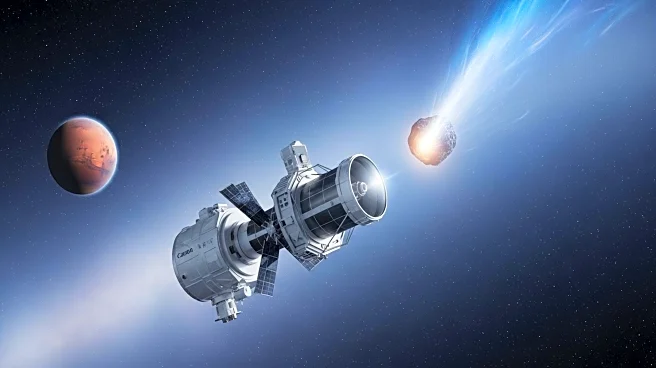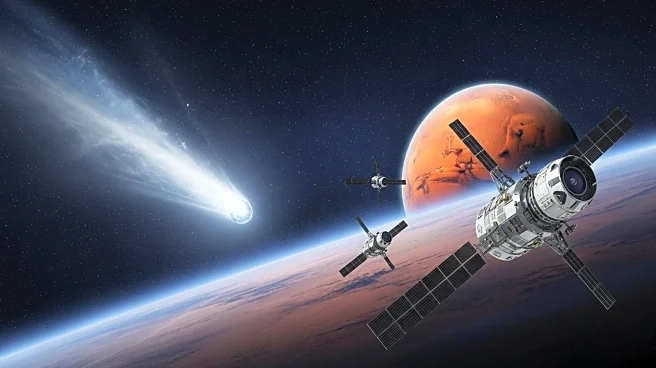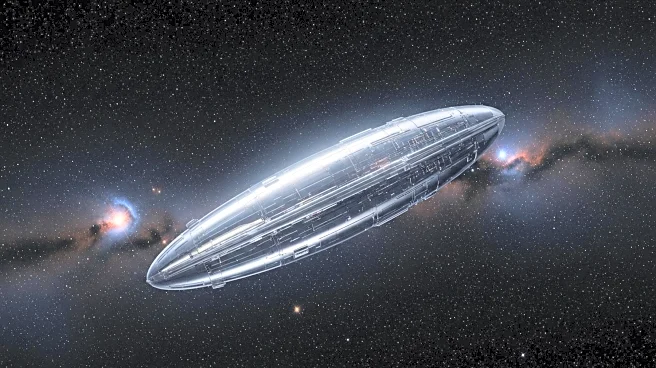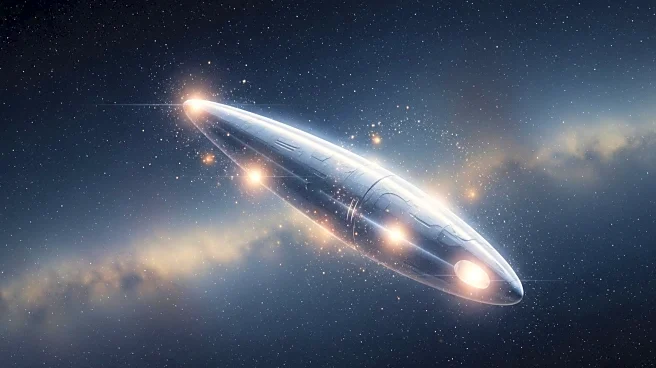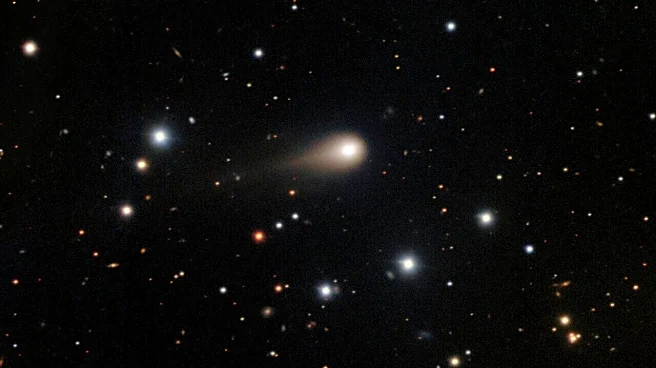What's Happening?
The interstellar comet 3I/ATLAS is currently being observed as it travels through our Solar System. This celestial body, which may have originated from the Milky Way's 'thick disk,' is of significant interest to scientists. As the comet approaches the Sun, it will soon become invisible to Earth-based telescopes, reappearing in December 2025. To continue observations during this period, scientists are utilizing various spacecraft, including the Emirates Mars Ultraviolet Spectrometer on the Hope spacecraft and NASA's Mars Atmosphere and Volatile Evolution spacecraft. These instruments aim to study the comet's ultraviolet spectrum, providing insights into its composition and origin.
Why It's Important?
The study of interstellar comet 3I/ATLAS is crucial for understanding the building blocks of planetary systems. By analyzing the comet's chemical makeup, scientists can compare it to comets formed within our Solar System, potentially revealing whether similar materials are present across different star systems. This research could offer new perspectives on the formation and evolution of planetary bodies, contributing to our broader understanding of the universe. The findings may also have implications for the search for extraterrestrial life, as they could indicate the presence of organic compounds or other life-supporting elements.
What's Next?
As the comet continues its journey, various spacecraft will continue to monitor its activity. The European Space Agency's Jupiter Icy Moons Explorer will observe the comet between November 2 and November 25, 2025, during its closest approach to the Sun. These observations are expected to provide critical data on the comet's behavior and composition. The results will be eagerly anticipated by the scientific community, as they could offer groundbreaking insights into the nature of interstellar objects and their role in the cosmos.
Beyond the Headlines
The observation of 3I/ATLAS also raises intriguing questions about the potential for technological artifacts from other civilizations. While the current focus is on understanding the comet's natural properties, the possibility of detecting signs of advanced technology remains a topic of interest. This aspect of the research highlights the broader implications of studying interstellar objects, as they may hold clues to the existence of intelligent life beyond Earth.

